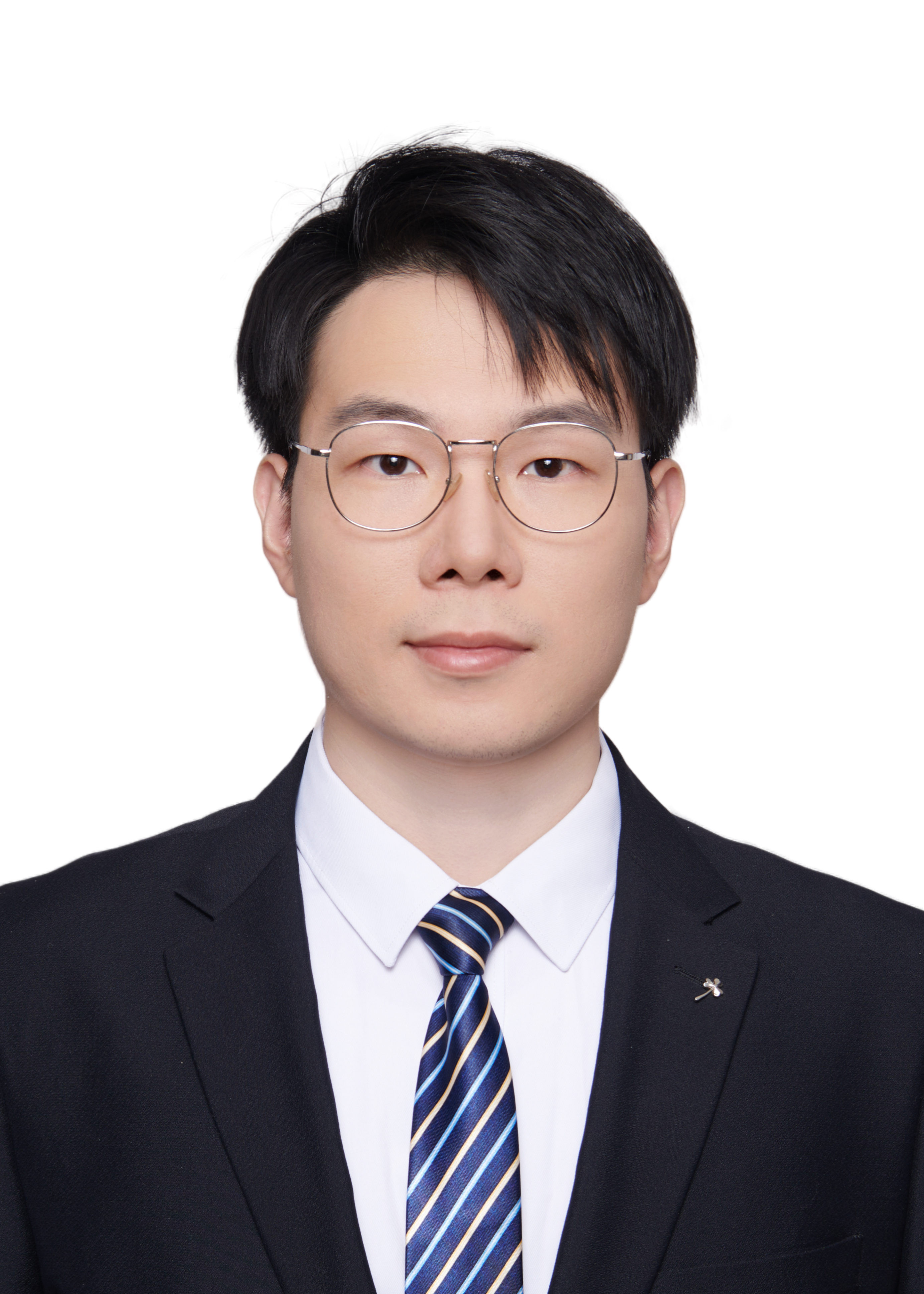
顾栋炼
-
学位职称 :
博士/副教授,城市安全与防灾减灾研究所副所长。
-
办公地点 :
科技楼508
-
Email :
gudonglian@ustb.edu.cn
-

学习工作简历
2022年-至今,北京科技大学城镇化与城市安全研究院,副教授;
2016年-2021年,清华大学土木工程系,博士;
2018年,美国加州大学伯克利分校土木与环境工程系,访问学者;
2012年-2016年,清华大学土木工程系,学士。 -

研究领域
[1] 气候韧性城市;
[2] 城市风灾安全;
[3] 计算机视觉与大模型。 -

本科生/研究生课程
《结构力学II》。
-

社会兼职
[1] 中国建筑学会城市安全分会,常务理事;
[2] 中国灾害防御协会城市安全监测预警分会,副秘书长;
[3] 《东南大学学报(自然科学版、英文版)》,首届青年编委;
[4] 中国灾害防御协会风与风灾分会,理事;
[5] 中国振动工程学会风致振动与控制专业委员会,委员;
[6] 公共安全科学技术学会城市基础设施智能建造与安全运维专业委员会,委员。 -

科研项目
[1] 国家自然科学基金面上项目,主持,2026-2029;
[2] 国家自然科学基金青年项目,主持,2023-2025;
[3] 国家重点研发计划课题,主持,2025-2027;
[4] 国家重点研发计划子课题,主持,2022-2025;
[5] 北京市城市规划设计研究院委托项目“海淀区风灾模拟专题研究”,主持,2025-2026;
[6] 国家自然科学基金重点项目,主要参与,2023-2027;
[7] 国家自然科学基金面上项目,主要参与,2023-2026;
[8] 国家自然科学基金专项项目“面向2040的城市安全科技发展战略研究”,主要参与,2025-2026;
[9] 中国工程院战略研究与咨询项目“土木、水利与建筑领域前瞻性储备性战略研究”,课题研究助理,2023-2026;
[10] 中国工程院战略研究与咨询项目“城市安全面临的挑战及对策”,主要参与,2022-2025。 -

代表性科研成果
科研奖励:
[1] 中国博士后创新人才支持计划,2022;
[2] 北京市科学技术进步一等奖,2023;
[3] 中国安全生产协会安全科技进步一等奖, 2023;
[4] 北京科技大学优秀博士后,2024。
代表性发明专利:
[1] 一种基于街景图片的建筑群外立面窗户定位方法及装置, CN117115243A【第1,授权】;
[2] 多模态融合感知的城市既有建筑广域监测预警方法及装置, CN116739357A【第1,授权】;
[3] 基于深度学习的倾斜摄影模型全要素单体化方法及装置, CN116597150A【第1,授权】;
[4] 基于物理模型的城市建筑群风灾保险保费厘定方法及装置, CN116523663A【第1,授权】;
[5] 基于数据融合和机器视觉的WMSD风险实时监测方法及装置, CN116206369A【第1,授权】;
[6] 基于地震情景下城市电梯内受困人数预测方法及系统, CN116362386A【第1,授权】;
[7] 一种面向地图导航的树木花粉暴露度最小路径预测方法, CN115860305A【第1,授权】;
[8] 一种城市尺度下树木花粉浓度预测方法及装置, CN115828794A【第1,授权】;
[9] 基于优化树木花粉浓度指标的城市绿化方法及装置, CN115935855A【第1,授权】;
[10] 面向城市区域尺度的绿化树木风灾破坏风险近实时评估方法, CN112381358【第2,授权】;
[11] 模拟建筑室内火灾时的烟气扩散路径模型装置, CN110164286A【第3,授权】;
[12] 基于历史街景图片的城市非设防建筑加固识别方法及装置, CN119418207A【第5,授权】;
[13] 一种基于数字孪生的建筑群外表面空鼓定位方法及系统, CN119044993A【第5,授权】;
[14] 一种精细地震动场快速构建方法及装置, CN118426042A【第6,授权】;
[15] 一种室内烟雾遮挡下的疏散人员识别方法及装置, CN118196700A【第6,授权】;
[16] 一种城市水电管网智能建模方法及系统, CN202411462268.7【第6,授权】;
[17] 一种城市埋地燃气管网地震灾害链风险分析方法, CN119047823A【第6,授权】。
代表性论文:
[1] Gu DL, Zhang N, Shuai QW, Xu Z, Xu YJ. (2024). Drone Photogrammetry-based Wind Field Simulation for Climate Adaptation in Urban Environments. Sustainable Cities and Society, 117, 105989. 【Q1,中科院1区,2025IF:12.0】;
[2] Gu DL, Yue QR, Li L, Sun CJ, Lu XZ. (2024). Vision-based digital shadowing to reveal hidden structural dynamics of a real supertall building. Engineering, 43, 146-158. 【Q1,中科院1区,2025IF:11.6】;
[3] Gu DL, Shuai QW, Zhang N, Jin N, Zheng ZX, Xu Z, Xu YJ. (2024). Multi-view street view image fusion for city-scale assessment of wind damage to building clusters. Computer-Aided Civil and Infrastructure Engineering, 40(2), 198-214. 【Q1,中科院1区,2025IF:9.1】;
[4] Gu, D., Zhang, N., Xu, Z., Wu, Y., & Tian, Y. (2024). Urban risk assessment model to quantify earthquake‐induced elevator passenger entrapment with population heatmap. Computer‐Aided Civil and Infrastructure Engineering, 39(14), 2204-2222.【Q1,中科院1区,2025IF:9.1】;
[5] Gu DL, Ahsan K, Lu XZ, Cheng QL. A computational framework for the simulation of wind effects on buildings in a cityscape. Journal of Wind Engineering & Industrial Aerodynamics, 2023, 105347.【Q1,中科院2区,2025IF:4.9】;
[6] Gu DL, Zhao PJ, Chen W, Huang YL, Lu XZ. Near real-time prediction of wind-induced tree damage at a city scale: Simulation framework and case study for Tsinghua University campus. International Journal of Disaster Risk Reduction, 2021, 53:102003.【Q1,中科院2区,2025IF:4.5】;
[7] Gu DL, Chen W, Lu XZ. Automated assessment of wind damage to windows of buildings at a city scale based on oblique photography, deep learning and CFD. Journal of Building Engineering, 2022, 52:104355.【Q1,中科院2区,2025IF:7.4】;
[8] Gu, D., Shuai, Q., & Wang, Y. (2023). CIM-powered physics-based assessment of wind damages to building clusters considering trees. Developments in the Built Environment, 15, 100178.【Q1,中科院2区,2025IF:8.2】;
[9] Chen, W., & Gu, D. (Corresponding author) (2025). Real-time physical fatigue risk assessment for construction workers using a teacher-student training paradigm. Automation in Construction, 177, 106372. 【Q1,中科院1区,2025IF:11.5】;
[10] Chen, W., Gu, D. (Corresponding author), & Ke, J. (2024). Real‐time ergonomic risk assessment in construction using a co‐learning‐powered 3D human pose estimation model. Computer‐Aided Civil and Infrastructure Engineering, 39(9), 1337-1353.【Q1,中科院1区,2025IF:9.1】;
[11] Wu YJB, Xu L, Gu DL (Corresponding author), Zhang N, Zheng ZX, Xu YJ. (2025). Vision-based recognition and geolocation of colored steel constructions in cities to promote urban management. Journal of Building Engineering, 102(6), 111904.【Q1,中科院2区,2025IF:7.4】;
[12] Xu Z, Liang CX, Mu ZG, Tian Y, Gu DL. (Corresponding author). (2025). Structural type identification of city-scale building groups based on deep learning. Journal of Computing in Civil Engineering. 【Q1,中科院2区,2025IF:5.2】;
[13] Xu, Z., Zhu, Y., Gu, D. (Corresponding author), & Zhou, Q. (2024). An integrated simulation method for large‐scale earthquake‐induced falling debris in building groups. Earthquake Engineering & Structural Dynamics, 53(5), 1767-1786.【Q1,中科院2区,2025IF:5.0】;
[14] Wang, Y., Lu, X., Rianto, S., & Gu, D. (Corresponding author) (2025). Falling debris from building envelope infill walls impacted by earthquake-induced building collision: Experiment and finite element analysis. Structures.【Q1,中科院2区,2025IF:4.3】;
[15] Tian, Y., Liu, S., Chen, S., & Gu, D. (Corresponding author) (2024). The site-city interaction effect uncertainty on structural responses and its application to fragility analysis of buildings in Shanghai CBD. Structures, 69, 107494.【Q1,中科院2区,2025IF:4.3】;
[16] Gu, D., Wang, Y., Lu, X., & Xu, Z. (2023). Probability-based city-scale risk assessment of passengers trapped in elevators under earthquakes. Sustainability, 15(6), 4829.【Q1,中科院3区,2025IF:3.3】;
[17] Gu DL, Zheng Z, Zhao PJ, Xie LL, Lu XZ. (2020). High-efficiency simulation framework to analyze the impact of exhaust air from COVID-19 temporary hospitals and its typical applications. Applied Sciences, 10(11):3949.【Q1,中科院3区,2025IF:2.5】;
[18] 顾栋炼, 吴小宾, 张庆林, 彭志桢, 刘宜丰, 田源, & 陆新征. (2024). 489 米超高层建筑抗倒塌分析案例研究. 工程力学, 41(4), 106-115.【EI】;
[19] 顾栋炼, 张银安, 刘华斌, 马友才, 曹晓庆, 吕中一, 解琳琳, 许镇, 徐永嘉, 郑哲, 杨参天, 陆新征. 新冠肺炎疫情临时医院排风的环境影响快速模拟方法. 工程力学, 2020, 37(12):250-256.【EI】;
[20] Wang, Y., Yue, Q., Lu, X., Gu, D. (Corresponding author), Xu, Z., Tian, Y., & Zhang, S. (2024). Digital twin approach for enhancing urban resilience: A cycle between virtual space and the real world. Resilient Cities and Structures, 3(2), 34-45.【EI】。

